

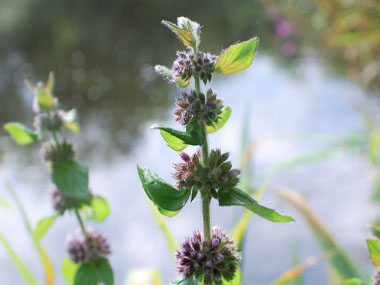
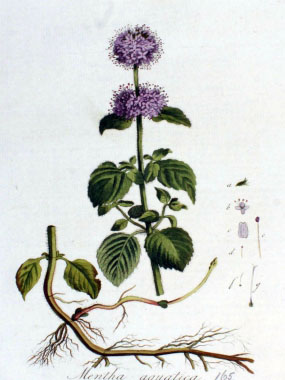
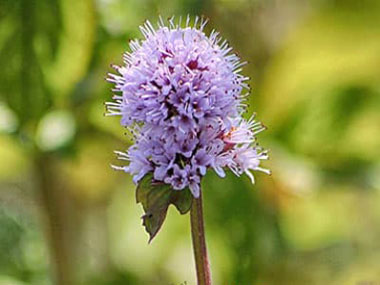
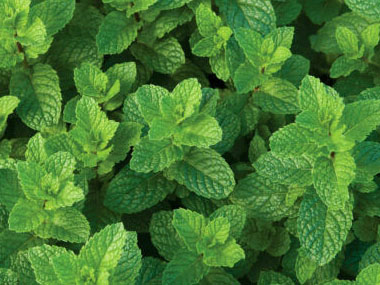
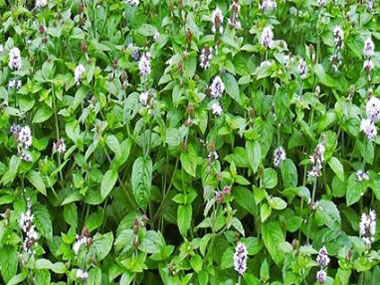
To support our efforts please browse our store (books with health benefits, etc.).
Native to Europe, (possibly Northwest Africa and Southwest Asia as well), this perennial water mint is an introduced aquatic plant to Canada and the U.S. In the Lamiaceae family, it is a sweet tasting mint that hybridises easily with other mints. Interestingly, a cross of water mint and spearmint produces peppermint. Water mint plants are aquatic to riparian flora. This plant is highly effective for erosion control and is used in landscaped areas that have man-made ponds. It is a favourite among many gardeners due to its ability to attract butterflies and pollinating insects. Apparently it is effective in repelling flies and keeping mice away.
Distinguishing Features
Water mint grows around water and is easy to recognise by its round flower head at the apex of the plant. Being a mint it has a square stem and opposite pairs of leaves alternating at 90 degrees to the pair above or below on the stem.
Flowers
Flowerheads have pink to lilac clusters of tiny flowers on the stem where the leaves join and one terminal cluster at the top of the stem. The corolla is slightly zygomorphic, it measures about 5 mm (0.2”) long, and is 4-lobed. The calyx is narrowly campanulate, 5-lobed, grooved, and 13-veined. It has four stamens almost of even length, yet longer than the corolla. Water mint flowers in mid to late summer.
 Fields
of Nutrition has medicinal benefits and vitamin/mineral content of Water Mint.
Fields
of Nutrition has medicinal benefits and vitamin/mineral content of Water Mint.
Leaves
Water mint leaves are thick, ovate with serrated edges. They can be totally green to having purple edges and veins; and can be hairy or smooth. They grow opposite and they are almost glabrous.
Height
This mint grows anyway from 30 to 60 cm (12 to 25”). The square stem is erect–ascending, unbranched–branched, can be hairy or smooth and it is often dark reddish.
Habitat
Being an aquatic plant this mint likes slow moving fresh water, ponds and lakes. Sometimes they will grow in swamps, marshes, fens, damp woodlands, and storm ditches.
Edible Parts
Leaves can be eaten raw or cooked (but they are strong). Water mint has a strong distinctive peppermint-like fragrance that is used best as a flavouring in salads or cooked foods; however, some people may find it far too pungent to use as a flavouring. A relaxing herbal tea can be made from the leaves.
Other Name
Marsh Mint.
Similar Plants
Mentha pulegium.
Winter Survival Food Handbook

PDF Plant Magazines
Types of Wild Food
Geographic Zones Seasons
Disclaimer
EdibleWildFood.com is informational in nature. While we strive to be 100% accurate, it is solely up to the reader to ensure proper plant identification. Some wild plants are poisonous or can have serious adverse health effects.
We are not health professionals, medical doctors, nor are we nutritionists. It is up to the reader to verify nutritional information and health benefits with qualified professionals for all edible plants listed in this web site. Please click here for more information.
Why Edible Wild Food?
- Food costs are rising
- Free, wild food is readily abundant
- Wild food adds nutrition to your diet
- Wild food can help treat various medical conditions





